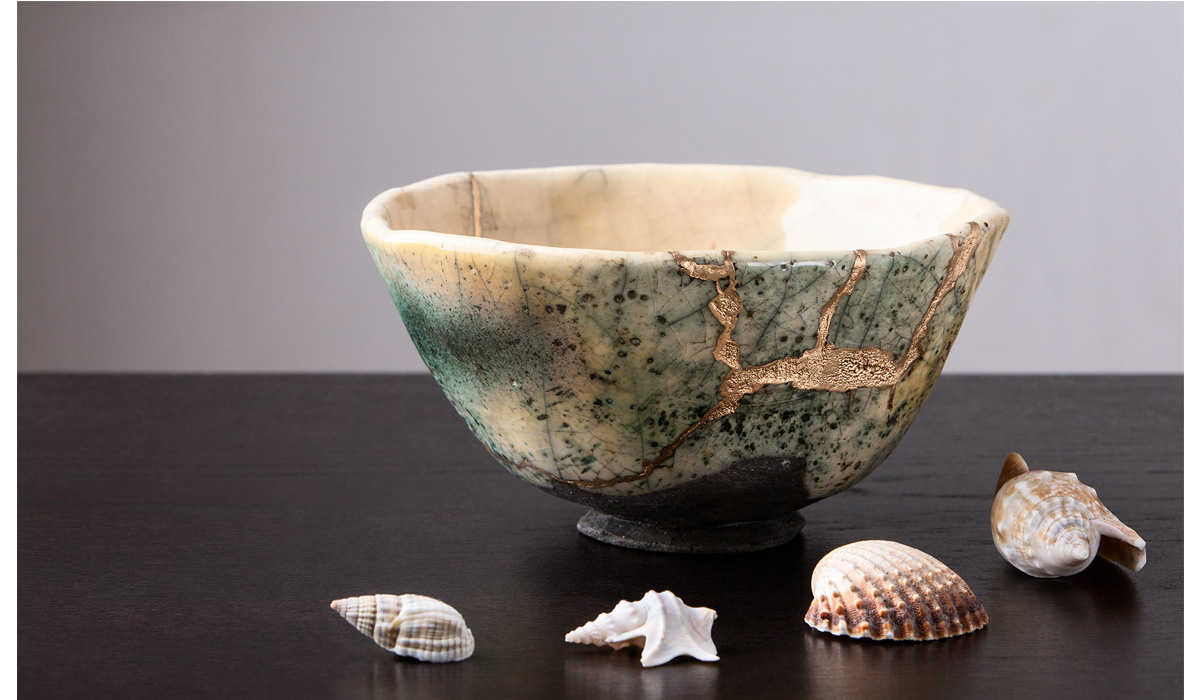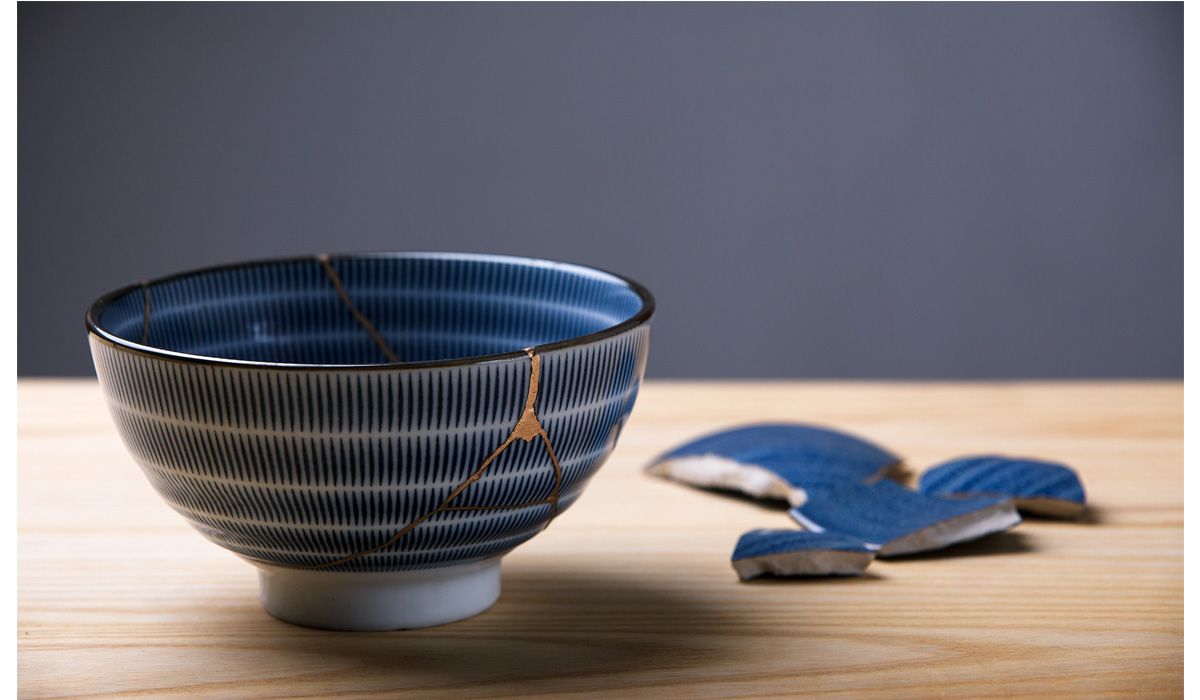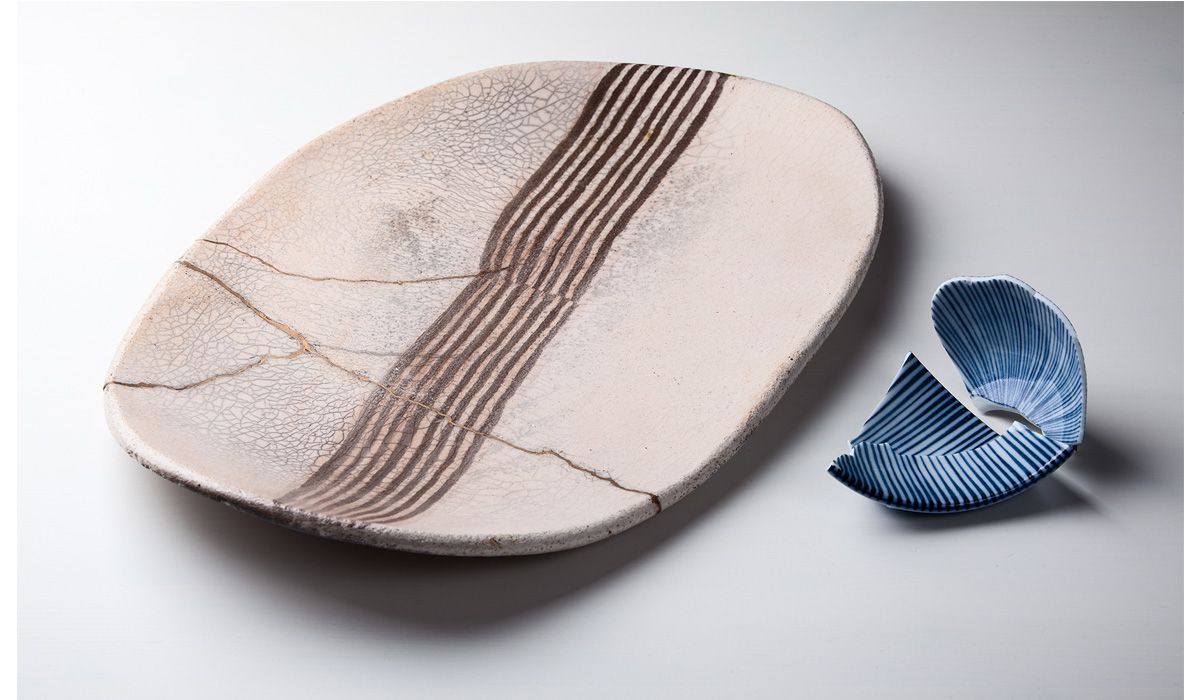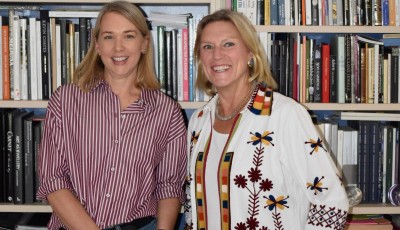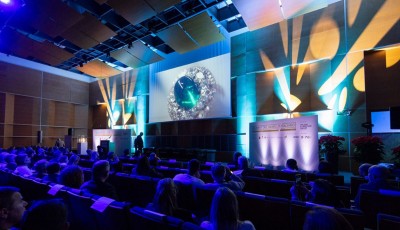Kintsugi: The Gold That Repairs And Embellishes
A meeting with Chiara Lorenzetti, professional restorer, who has chosen to study, practice and divulge the art of Kintsugi in Italy
Four years ago, Chiara approached Japanese culture, discovering the technique of Kintsugi, which means ‘repair with gold’ (from kin, gold, and tsugi, repair). We met her in Milan to ask her to explain what this art consists of and how it can be applied to jewelry and ceramics.
What is Kintsugi?
Kintsugi dates back to the end of the 1400s in Japan when, during a tea ceremony, it was first used to repair shogun Ashikaga Yoshimasa's teacup. Urushi lacquer, a native sap extracted from the Rhus verniciflua tree, was used to glue the broken pieces back together. The glued cracks were highlighted with the lacquer and then covered in gold powder. The result was much appreciated by Yoshimasa: not only had his cup been fixed, it had taken on new life, full of imperfections and, for this very reason, it was extremely beautiful. It had become unique.
What value does the item have after being repaired?
In restoration, when an item breaks, it loses 50% of its value. If it is repaired, it regains 25%. Therefore, the restored item is worth 75% of its original value. Kintsugi, however, is totally different because it is applied to items that have no great value and actually acquire more value because of the gold. In Japanese philosophy, what is broken becomes unique and takes on new value. This is because, due to the breakage, no two pieces will ever be the same.
What types of item is this technique applied to? Have you ever had to work on jewelry?
Since it is a technique that derives from the tea ceremony, cups are what are mainly repaired. I have worked on some broken, white porcelain, heart-shaped pendants that I was commissioned to repair with gold by Gioia di Biagio. Gioia, musician and writer, suffers from Ehlers Danlos syndrome and has practiced Kintsugi on herself, applying gold leaf to her scars. She asked me for a pendant that she could always wear and that would represent the moment we met at the ‘Io Mi Oro’ live performance last July.

PICTURE BY MATTEO SARTORI
What is Kintsugi?
Kintsugi dates back to the end of the 1400s in Japan when, during a tea ceremony, it was first used to repair shogun Ashikaga Yoshimasa's teacup. Urushi lacquer, a native sap extracted from the Rhus verniciflua tree, was used to glue the broken pieces back together. The glued cracks were highlighted with the lacquer and then covered in gold powder. The result was much appreciated by Yoshimasa: not only had his cup been fixed, it had taken on new life, full of imperfections and, for this very reason, it was extremely beautiful. It had become unique.
What value does the item have after being repaired?
In restoration, when an item breaks, it loses 50% of its value. If it is repaired, it regains 25%. Therefore, the restored item is worth 75% of its original value. Kintsugi, however, is totally different because it is applied to items that have no great value and actually acquire more value because of the gold. In Japanese philosophy, what is broken becomes unique and takes on new value. This is because, due to the breakage, no two pieces will ever be the same.
What types of item is this technique applied to? Have you ever had to work on jewelry?
Since it is a technique that derives from the tea ceremony, cups are what are mainly repaired. I have worked on some broken, white porcelain, heart-shaped pendants that I was commissioned to repair with gold by Gioia di Biagio. Gioia, musician and writer, suffers from Ehlers Danlos syndrome and has practiced Kintsugi on herself, applying gold leaf to her scars. She asked me for a pendant that she could always wear and that would represent the moment we met at the ‘Io Mi Oro’ live performance last July.
Which materials are used in the repair?
The materials I use - rice flour, tonoko (clay powder), gold powder - all come from Japan. You can't find them in Italy. Urushi lacquer has only recently been imported because it is extracted from a tree. It is highly allergenic when it is fresh and is therefore hard to find and expensive.
Can you explain the process more clearly?
The process stages start from studying the fragments and putting the item back together precisely with paper adhesive tape in order to get a better idea of the missing pieces or any tricky joints. Once the pieces have been identified, the next step is to mix flour and water and add the lacquer. This glue is then applied with a spatula onto the broken areas and the object is reassembled. The ceramic item is them placed inside a box (wall) that reproduces a warm and humid environment with a temperature of 20 degrees and 70% humidity. Once the required time has elapsed, which can vary from a week to a month, the next step is filling and sanding and then it is left to rest for another seven days. After a final sanding, adhesive is applied onto which the gold powder is sprinkled using a spatula or bamboo stalk. If necessary, a transparent varnish can be applied by hand to protect the finished work.
How long does it take to create an item?
It takes about a month from start to finish. Not everyone is prepared to wait which is why, in my opinion, it is unlikely to be taken into consideration as a true and proper technique. Nowadays, people prefer speed, they are demanding and want everything immediately. Kintsugi goes against the grain and it is extremely Japanese in this respect.
The materials I use - rice flour, tonoko (clay powder), gold powder - all come from Japan. You can't find them in Italy. Urushi lacquer has only recently been imported because it is extracted from a tree. It is highly allergenic when it is fresh and is therefore hard to find and expensive.
Can you explain the process more clearly?
The process stages start from studying the fragments and putting the item back together precisely with paper adhesive tape in order to get a better idea of the missing pieces or any tricky joints. Once the pieces have been identified, the next step is to mix flour and water and add the lacquer. This glue is then applied with a spatula onto the broken areas and the object is reassembled. The ceramic item is them placed inside a box (wall) that reproduces a warm and humid environment with a temperature of 20 degrees and 70% humidity. Once the required time has elapsed, which can vary from a week to a month, the next step is filling and sanding and then it is left to rest for another seven days. After a final sanding, adhesive is applied onto which the gold powder is sprinkled using a spatula or bamboo stalk. If necessary, a transparent varnish can be applied by hand to protect the finished work.
How long does it take to create an item?
It takes about a month from start to finish. Not everyone is prepared to wait which is why, in my opinion, it is unlikely to be taken into consideration as a true and proper technique. Nowadays, people prefer speed, they are demanding and want everything immediately. Kintsugi goes against the grain and it is extremely Japanese in this respect.
How is an item broken before being repaired?
You take the item and cover it with a cloth. Then you hit it with a hammer. I break the item according to what I think could be the final creation. Depending on the pieces I have at my disposal, I decide where to strike. It is not something that happens by chance. The breakage is always studied and guided. You need an in-depth knowledge of the materials to be able to do a quality job.
How did you discover the art of Kintsugi?
I was initially skeptical. An English friend of mine had spoken to me about it because this technique has already been in use in England for years. The restorer's work consists of repairing without seeing that there was ever any damage. In this case, however, the cracks are highly visible and this is what makes the finished item so unique. In fact, in the restoration field, this technique is not understood, and in Italy, it is not even considered as real restoration.
Chiara Lorenzetti Bio: Chiara Lorenzetti, restorer since 1986, lives and works in Biella. For her working and artistic needs, she has extended her knowledge to approach the world of gilding and the restoration of wooden picture frames. This technique foresees applying 23.75 carat gold leaf to quartz on large frames or reliefs. Since 1991, she has been practicing restoration work on ceramics, dolls, polychrome and gilt wooden items in her Chiarartè workshop.
You take the item and cover it with a cloth. Then you hit it with a hammer. I break the item according to what I think could be the final creation. Depending on the pieces I have at my disposal, I decide where to strike. It is not something that happens by chance. The breakage is always studied and guided. You need an in-depth knowledge of the materials to be able to do a quality job.
How did you discover the art of Kintsugi?
I was initially skeptical. An English friend of mine had spoken to me about it because this technique has already been in use in England for years. The restorer's work consists of repairing without seeing that there was ever any damage. In this case, however, the cracks are highly visible and this is what makes the finished item so unique. In fact, in the restoration field, this technique is not understood, and in Italy, it is not even considered as real restoration.
Chiara Lorenzetti Bio: Chiara Lorenzetti, restorer since 1986, lives and works in Biella. For her working and artistic needs, she has extended her knowledge to approach the world of gilding and the restoration of wooden picture frames. This technique foresees applying 23.75 carat gold leaf to quartz on large frames or reliefs. Since 1991, she has been practicing restoration work on ceramics, dolls, polychrome and gilt wooden items in her Chiarartè workshop.


